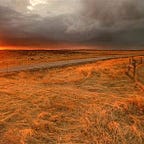EARL OLD PERSON
When the Blackfeet reservation on the Montana side was divided into allotments, two areas were preferred by old-timers because they were still undeveloped and hunting was possible. One location was Heart Butte and the other one was Starr School. The allotment occupied by Juniper Old Person’s family was called “Greasewood,” two miles north of Starr School, which put it almost in Canada. This information comes from an interview Adolf Hungry Wolf had with Earl Old person in 2004 and included in his Good Medicine book, the one of four called “Pikunni Biographies.” It’s long, revealing in a direct way why Earl has had so much impact.
Occasionally there is a Blackfeet man who has an innate dignity and conviction about who is and how he relates to others. Earl wore three braids, man-style, into adulthood even when playing basketball at Browning High School where female relatives rebraided his hair daily. He always preferred to sit with the elders of his time, who were generations earlier than him, warriors. He expected to be a phys ed major in Missoula, but was claimed by Leo Kennerly and Iliff McKay who intended him to be on the tribal council. This is the way Earl told it. Sometimes he was seen as a schemer and operator, but he spoke eloquently about the need for maintaining the old ways and being with the People. That’s the way he was on the tribal council.
The endorsement as traditional chief came in part from recognition by the original White Calf’s grandsons. He served from a time when everyone on the tribal council spoke Blackfeet through the transition to a time when no one spoke the old language. Since he looked so good and had such good manners, he was often chosen by white outsiders to represent the People. This was helped by his allegiance to the Boy Scouts, sponsored by Frank Guardipee who was active with the movement. Between the two connections he had chances to tour Europe and to meet US presidents.
At Glacier Park, not far from Starr School but quite a different resort world, Earl mingled with the big shots and the art community around Winold Reiss. There are paintings of him and his dad from that time, when he was still a child. Though the family had hard times and lived in a one-room cabin, they were solidly committed to each other and to the culture sustained by stories told to children at bedtime and the constant stream of songs and dances shaped into social events. These sources of identity and relationship strengthened his confidence in his role.
The years of Earl’s adulthood and participation were demanding of leaders. The US government wanted to terminate the tribes and reservations and elements of the BIA were destructive. At the same time, oil had been struck and the forces of corporate America were coming to bear on the tribe. Though things never got quite as murderous as they had in Oklahoma, the influx of money confused and inflamed the transition from old times to modern business practices, many of them covert and corrupt but justified by the idea that “Indians” couldn’t handle the big time anyway.
Iliff McKay tragically died of anaphylactic shock after penicillin was given to him for an infection. This removed an ally who might have been a big help. (Iliff’s children constituted a leadership legacy in Mary Margaret McKay Johnson, Tom McKay, and other brothers.) George Kicking Woman remained a close support.
To Adolf, Earl grieved and deplored the lack of virtue in the leaders of 2004. He himself found a kind of respectability in presentation, enacting the trope of “Noble Indian” even as he really was one. In the end suspicions that his success was somehow due to shady dealings pushed him out of his long time role as tribal chairman, but it hardly seemed to matter. People still consulted him. He accumulated honorary degrees.
Bob Scriver was Earl’s band teacher as well as leading the Blackfeet band until he joined the army. At the end of WWII when the soldiers were brought home on a plane that landed in Cut Bank, Scriver among them, Earl was in the band playing to greet them. He was among the celebrants of Bob Scriver’s funeral. Lives in Browning weave together, hard to explain because so constant, both small and large.
Earl never seemed to show resentment of poverty though the family sometimes went hungry. I never heard him criticize whites. But many times I heard him say what his parents said in Blackfeet. “We had no running water, no heat, but every morning, they would wake us up and say in Indian, ‘Jump up! Try!’” he recalled. “Those words helped us start our day right.”
I wasn’t close to Earl — simply present at many of the same events. One was entirely accidental. I was circuit-riding and had treated myself to a nice supper in Great Falls at a place with tablecloths and a maitre d’. I was seated and eating when Earl came in alone and was seated at a table a little distance away. There were few others and we acknowledged each other, then visited a bit back and forth. Nothing important. Neither of us invited the other to join their table. Separated but equal.
The Great Falls Tribune has the best story so far. They have had time to get it ready and are close enough to do proper research.
Their story ends with a quote:
“Old Person often spoke of unity and encouraged young people to learn and practice Blackfeet culture. ‘Don’t be afraid of one another, our young people need to know that,’ he told the Tribune in 2020. ‘Help one another out. Uplift each other and if you can protect someone, do it. We have spiritual ways. There’s someone looking down on us.’”
